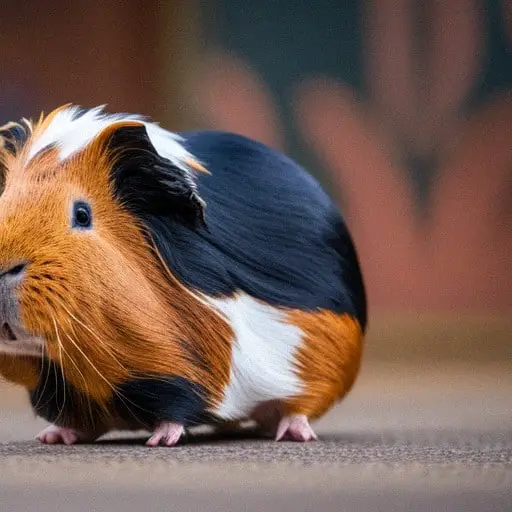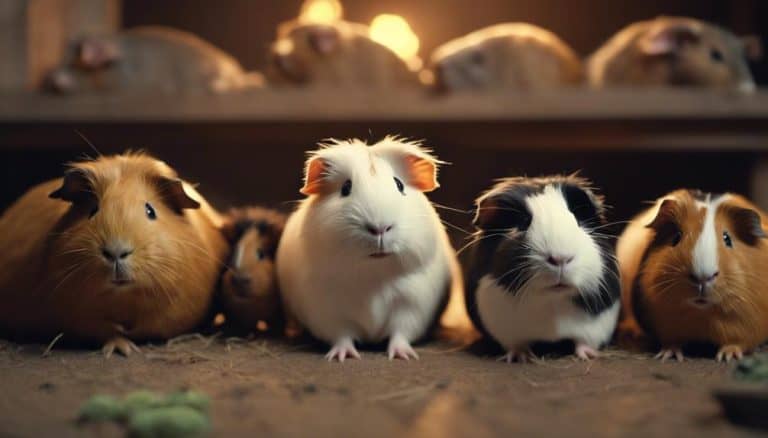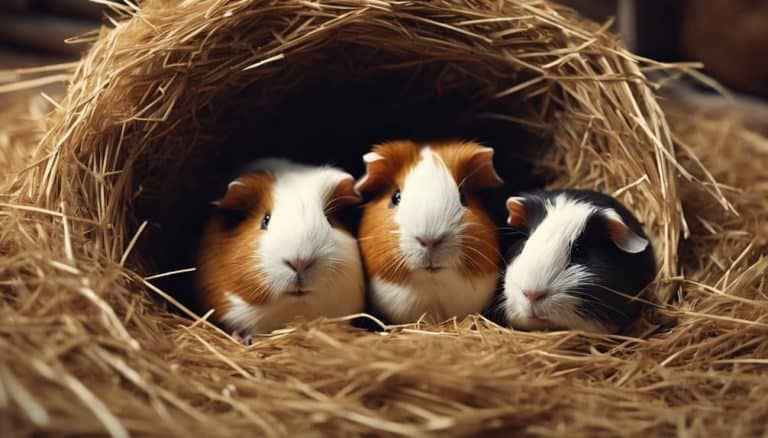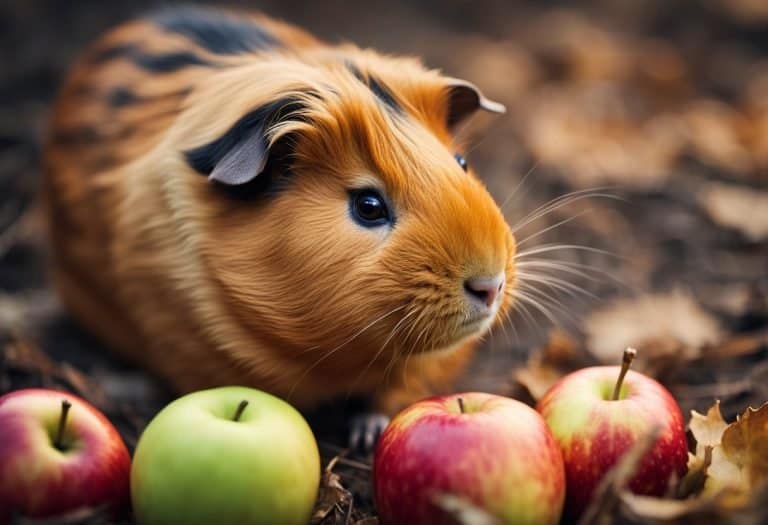Understanding Guinea Pig Aggression: Will Guinea Pigs Resort to Fatal Confrontations?
In the realm of small pets, guinea pigs hold a special place in our hearts with their adorable appearances and gentle dispositions. However, despite their reputation for being docile creatures, there are instances when guinea pigs display aggressive behavior that leaves pet owners perplexed and concerned.
In this article, we delve into the question – do guinea pigs resort to fatal confrontations?
By exploring the root causes of aggression in these furry companions, we aim to shed light on understanding guinea pig aggression and provide insights on how to address this issue effectively.
Signs and Triggers of Guinea Pig Aggression
Guinea pigs, generally peaceful creatures, may display signs of aggression when provoked or threatened. It is crucial for guinea pig owners to recognize these signs in order to prevent fatal confrontations. Here are some common signs that can indicate escalating aggression in guinea pigs:
- Teeth chattering: This rapid teeth grinding sound indicates extreme displeasure and possible aggression. It serves as a warning sign for the approaching confrontation.
- Raised fur and stiff posture: When a guinea pig’s fur stands on end and its body becomes rigid, it suggests potential aggression. They are preparing for combat and trying to appear larger to intimidate their opponent.
- Lunging or charging: If a guinea pig lunges forward aggressively or charges towards another, it signifies an escalation of hostility.
While these signs can be warnings, certain triggers instigate aggressive behavior among guinea pigs:
- Feeling threatened by new surroundings or unfamiliar people
- Competing over food or resources such as space or toys
- Introducing new cage mates without proper acclimatization
Being aware of these signs and triggers allows responsible pet owners to intervene timely, creating a safe environment for their furry companions while minimizing the risk of fatal confrontations.
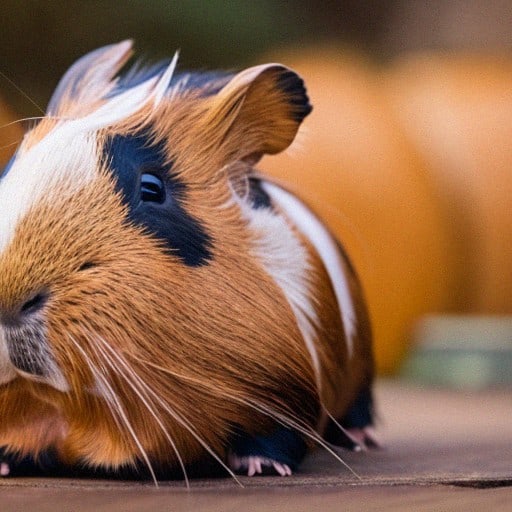
Understanding Dominance and Hierarchy in Guinea Pig Groups
Guinea pigs are social animals that naturally form hierarchies within their groups. These hierarchies determine the dominance of each guinea pig and help to maintain order within the group. Dominant guinea pigs typically exhibit assertive behavior, such as mounting or chasing other members of the group.
When establishing dominance, guinea pigs rely on subtle body language cues like displaying an arched back or baring teeth to communicate their status. It’s important for owners to understand that this hierarchy is a natural part of a guinea pig’s social structure and should not be disrupted unless necessary.
Here are some key points to remember about dominance in guinea pig groups:
- Dominance behaviors can escalate into aggression if there is competition for resources like food or shelter.
- Introducing new guinea pigs may temporarily disrupt the established hierarchy until they establish their positions.
- Separating dominant individuals from subordinate ones can lead to stress and conflict among them.
By understanding how dominance works in guinea pig groups, owners can provide appropriate housing environments and minimize potential conflicts between their furry companions.
Managing Aggression in Multi-Guinea Pig households
Introduce the concept of aggression within guinea pig groups
When multiple guinea pigs live together, conflicts can arise, leading to aggression. It’s crucial to understand how these confrontations can be managed effectively and ensure a harmonious environment for all the furry friends.
Identify potential triggers of aggression
Aggression among guinea pigs is often triggered by factors such as resource guarding, territorial behavior, or dominance disputes. Recognizing these triggers is vital in addressing and preventing further aggressive incidents from occurring.
- Resource guarding: Competition over food, water bottles or hiding spots may escalate into aggressive behaviors.
- Territorial behavior: Guinea pigs are naturally inclined to protect their personal space. Proper territory management can minimize territorial disputes.
- Dominance disputes: Establishing a pecking order is common among guinea pigs but can result in fights if not properly handled.
Implement strategies to mitigate and prevent aggression
To manage and reduce confrontation between guinea pigs residing within a single household:
- Provide ample resources: Ensure each piggy has enough food dishes, water bottles, hideouts so that competition for essential items gets minimized.
- Offer plenty of living space: Providing sufficient room enables individual territories to form comfortably without excessive overlap.
- Observed introductions: When introducing new piggies into an established group or simply re-introducing them after separation due to conflicts, facilitate gradual exposure with close monitoring until they display signs of calm cohabitation.
Implementing these strategies along with careful observation will contribute significantly towards creating a peaceful environment where conflicting behaviors diminish over time
Preventing and Resolving Aggression in Guinea Pigs
Preventing Aggression in Guinea Pigs
- Provide a spacious living environment with separate areas for each guinea pig to reduce territorial disputes.
- Ensure each guinea pig has enough food and hideaways to prevent competition and aggression over resources.
- Introduce new guinea pigs gradually, through fence or cage barriers, allowing them to become familiar with each other’s scents before physical contact.
Resolving Aggression in Guinea Pigs
If fights do occur:
- Separate the fighting guinea pigs immediately into different cages to avoid serious injuries.
- Allow them some time apart and then reintroduce them slowly, starting from a neutral space like a bathtub or playpen where there are no established territories or possessions.
- Observe their behavior carefully during the reintegration process; if aggression continues despite repeated attempts at reconciliation, it may be necessary to permanently keep the guinea pigs separated.
Remember that preventing aggression is always preferable as it reduces stress for all involved parties, but sometimes conflicts cannot be completely resolved due to individual temperament differences among guinea pigs.

